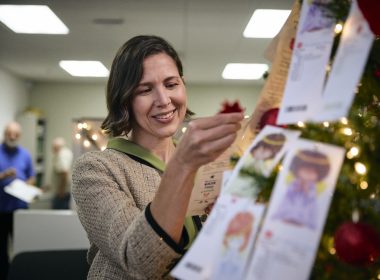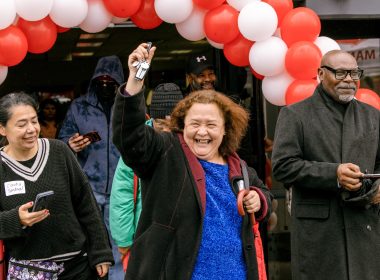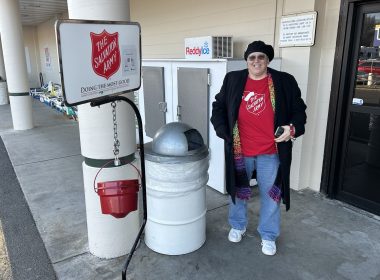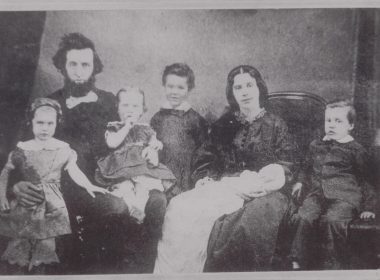
by Frances Dingman –
Possibly you have not heard of John Milsaps, one of the Army’s foundation stones. Though never rising above the rank of major, he was one who gave The Salvation Army in the western states some of its unique character. In San Francisco to welcome Major Alfred Wells in July 1883, he soon made himself indispensable as trouble shooter, War Cry editor, and one who truly cared for his fellow officers.
Regarded as odd by some, he made do with shabby uniforms and the simplest of food. He was always short of money, but it was said, “a million couldn’t buy him from his principles.” He converted the flamboyant “Joe the Turk,” who was his very opposite except for their common aim of saving souls.
Born in Houston in 1852, John helped make cartridges for his father, a Confederate officer. His grandfather, Isaac Milsaps, was one of those who died at the Alamo.
John left home at an early age in search for gold in California. He took odd jobs along the way, cooking for wagon trains and railroad crews while making his way west.
Becomes Salvationist
Reaching San Francisco, he joined the Pacific Coast Holiness Association, which was just beginning in the city. When Major Alfred Wells arrived from London to take charge, Milsaps was sworn in as a Salvationist. In a few months he was sent as a staff captain to open the work in Stockton. Mary Stillwell said in later years, “Milsaps stood up with us [at their wedding in 1884]. He looked almost as old then as he does now.” Later in San Francisco, Napa, and Sacramento, he did memorable service for the Lord. Though besieged by shouting, catcalls, thrown objects and physical threats, they said he always took the abuse good-naturedly.
Edits War Cry
Milsaps contributed so much to the Pacific Coast War Cry that he was brought in from the field and made editor, a position he held admirably for some years. Bound volumes of these papers give an invaluable story of the pioneer Army in the West. Detailed and painstakingly correct, it is a wonder how they could have come out weekly under the conditions of the time. To help make expenses, the press was rented out to other publications as well. Artist Manuel Valencia peopled the pages with lively sketches made at the scene, a happy consequence of the lack of photographs.
A lifelong bachelor, Milsaps would give back most of his meager pay, telling the finance clerk to give it to officers who needed it most for their families. This was one reason for his threadbare appearance. His diary relates that “by sleeping in my office, eating two meals a day, and economizing in other ways,” he was able to do things that were more important to him. His salary at the time was $9 per week.
In 1894, fired with enthusiasm for the “attack on Hawaii,” he accompanied the group on the “Big Go” and assisted in the first meetings. Before returning to his editorial duties, he sent back voluminous accounts to the War Cry. 
1930 CONGRESS–Milsaps meets with Brother Manuel Valencia, early War Cry artist.
Edits War Cry
Milsaps contributed so much to the Pacific Coast War Cry that he was brought in from the field and made editor, a position he held admirably for some years. Bound volumes of these papers give an invaluable story of the pioneer Army in the West. Detailed and painstakingly correct, it is a wonder how they could have come out weekly under the conditions of the time. To help make expenses, the press was rented out to other publications as well. Artist Manuel Valencia peopled the pages with lively sketches made at the scene, a happy consequence of the lack of photographs.
A lifelong bachelor, Milsaps would give back most of his meager pay, telling the finance clerk to give it to officers who needed it most for their families. This was one reason for his threadbare appearance. His diary relates that “by sleeping in my office, eating two meals a day, and economizing in other ways,” he was able to do things that were more important to him. His salary at the time was $9 per week.
In 1894, fired with enthusiasm for the “attack on Hawaii,” he accompanied the group on the “Big Go” and assisted in the first meetings. Before returning to his editorial duties, he sent back voluminous accounts to the War Cry.
First Chaplain
At the onset of the Spanish-American War, he obtained permission to join the troops waiting for deployment at a base near San Francisco and went over as an unofficial chaplain with the men. Later, during the siege of Manila, he remained close to the front lines, being of service wherever he could and holding meetings for the men in tents or whatever buildings were available. The gramophone he brought along was an entertainment magnet for men hungry for a touch of home. He also held meetings for the natives, though his dream of opening the work in the Philippines was not to be realized until 1937, five years after his promotion to Glory.
Returns a hero
After visiting China and Japan he returned to the U.S. and resumed his duties with the national War Cry.
The War Cry tells of a tremendous welcome reception at Congress Hall, with the “firing of volleys, waving of handkerchiefs and tooting of horns,” when the “Hero of the Philippines” returned from his war service.
Milsaps found himself handicapped by a cut in financial support from National Headquarters. His diary shows concern with the administration of the Farm Colony scheme and with National Commander Frederick Booth-Tucker’s interest in acquiring land in Mexico for more colonies. His fear was that the emphasis was getting to be toward money and less toward the saving of souls.
Leaves the Coast
Beginning with the new century, the western states were administered from Chicago. Milsaps deeply resented the decision to discontinue the publication of the Western War Cry in 1900. Though he was associated with it for awhile, the paper published in New York for the next 20 years could never quite do justice to events on the West Coast. This is a real loss to historians.
According to his diary, Milsaps remained critical of the administration in New York, choosing to work in the western part of the country. He served as general secretary in the Northwest Province, in Minneapolis. After a short time as National Spiritual Special, he commanded his beloved Hawaiian Islands Division. There he did real missionary work among the various nationalities, encouraging his officers by practice and precept. He served again in the Northwest Province, followed by social work assignments out of Chicago. He was also employed for special work, traveling in foreign lands and conducting revival meetings.
Following retirement in 1917, though not listed in the War Service Record, he joined the Salvationists briefly to serve the troops in France, enduring cold and hardships as he had often done before.
Books are his legacy
During his entire career, Milsaps had scrimped and saved to buy books, amassing an impressive collection. These books on the subjects of religion, history, and foreign lands are the memorial of his loyalty to the printed page.
Milsaps spent half a century away from Houston, but always called it home. From all over the world he sent back valuable items to the library for safekeeping, sometimes going hungry if he saw something he wanted to send. When a museum was finally opened, the Milsaps collection was its nucleus. There are about 15,000 titles, including many pamphlets; a rare collection of old Bibles, and possibly the most complete collection of the London War Cry in existence. The Major’s gifts to the library are housed in a special wing, known as the Circle M Collection.
Without personal sacrifice, he could never have accomplished what he did, but he would have been the last to regard it as a hardship.
His last visit to California was in his 80th year. Though old and frail, there was the same twinkle in his eye as of old, and a happy expression on his face. “To know that my Pacific Coast comrades have not forgotten me brings satisfaction. I am going back to Texas. In all probability I shall be promoted to Glory before long, but be assured I shall wait at the Pearly Gates to greet my comrades.”
The end of his earthly pilgrimage came in 1932, in his small cottage with few comforts, surrounded by his books. Of all the Western Pioneers, probably none so much as John Milsaps would relish the chance to revisit the Army he had helped start, and see the work that now goes on for the Glory of God.
Source: Series by Lt. Colonel Anthony Merriweather (R) in the 1933 Western War Cry and portions of Milsaps’ diary. Thanks also to The Salvation Army National Archives and the Central Territorial Museum.
Photos courtesy Western Territorial Museum










